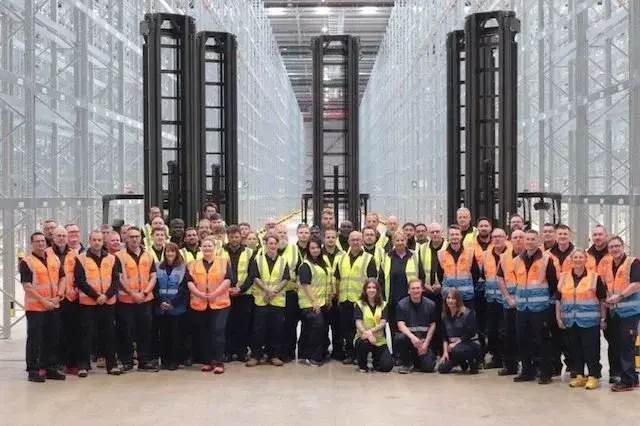-
Solutions
for Retailers
 Virtualstock
VirtualstockThe UK’s only dropship and curated marketplace platform, Virtualstock connects leading retailers and suppliers to streamline trade, expand ranges, and grow sales without complex integrations.
for Suppliers
 Supplier Hub
Supplier HubConnect with top UK retailers via Supplier Hub — the platform that helps dropship suppliers expand product reach and get noticed by category managers and buyers.
FIND OUT MOREExplore how Virtualstock could work for you.
Book a quick demo and see why we’re the UK’s leading dropship and curaed marketplace platform.
-
Why Virtualstock?
Why Virtualstock?
.jpg?width=96&height=96&name=Group%201%20(1).jpg) Success Stories
Success StoriesExplore real success stories from the UK’s largest network of retailers & suppliers using our platform to streamline operations and scale smarter.
.jpg?width=96&height=96&name=Group%201%20(1).jpg) Partnerships
PartnershipsVirtualstock’s hand-selected technology and solution partners help retailers scale ecommerce operations more efficiently — from integration to fulfilment.
%20(1).png?width=95&height=23&name=image%20359%20(1)%20(1).png)
%20(1).png?width=50&height=19&name=image%20360%20(2)%20(1).png)
.png?width=88&height=18&name=image%20347%20(2).png)
.png?width=130&height=23&name=image%20371%20(2).png)
.png?width=102&height=21&name=image%20345%20(2).png)
.png?width=93&height=28&name=image%20361%20(1).png)
%20(1).png?width=99&height=22&name=image%20362%20(1)%20(1).png)
.png?width=130&height=16&name=image%20352%20(1).png) PARTNERSHIPS
PARTNERSHIPSJoin our partner community
Join our curated network of technology and solution partners. Fill in the form and we'll be in touch with next steps.
- About
-
Resources
Press
upcoming eventVision Summit 2025
Join us on 11th September 2025 in London to explore the future of retail and supply chains — from dropship innovation to curated marketplaces and smarter range expansion.
The 2025 Playbook: 5 Strategies for retailers and suppliers to master omnichannel success

Summer stock planning is in full swing – and the pressure is on. Retailers are trying to predict the unpredictable: how will cautious consumers behave? What trends will stick? And which products will be left gathering dust in the warehouse?
Against that backdrop, the stakes couldn’t be higher. Consumer confidence is scraping the floor, inflation is still biting, and shoppers expect more than ever – instant access, slick experiences and no excuses when things go wrong.
The reality is retail is at a tipping point. Get it right, and you create a connected, agile operation that delights customers and drives growth. Get it wrong, and you’re stuck in reactive mode — facing late launches, missed sales and a tidal wave of “where’s my order?” complaints.
For retailers, this means rethinking stock management, delivery networks and customer engagement strategies to remain competitive. Suppliers, meanwhile, face mounting demands to improve efficiency, maintain quality and uphold service level agreements (SLAs). The old ways of working no longer cut it.
In my view, it comes down to adopting five key strategies for retailers and suppliers to create a blueprint for success.
Build partnerships to last
When trading gets tough, the strength of your retailer-supplier relationships is put to the test. Therefore, trust, transparency and accountability are non-negotiables.
Retailers must provide suppliers with realistic forecasts, and suppliers must uphold SLAs. These include maintaining stock quality, ensuring accurate stock levels, providing transparent customer order tracking, and meeting delivery deadlines.
Align expectations
Without clear expectations over agreement launches get delayed, customer service teams get swamped and returns go through the roof. Realistic standards on both sides are the only way forward. Retailers should be upfront about timelines and campaign plans, and suppliers need to be honest about what they can deliver, and when. But this isn’t just about logistics – it’s about owning the customer experience. Today’s shoppers move between channels without a second thought, expecting consistency and control.
To meet these expectations, we’re seeing an industry trend where major retailers are extending their online product ranges by combining dropshipping with a curated marketplace model. This approach offers customers greater choice while allowing retailers to retain control over the end-to-end experience, and high-quality interactions across all channels.
Co-own collaboration
Buzzwords aside, collaboration only works when both sides are invested in the result. Joint planning sessions are invaluable for clarifying inventory needs, promotional campaigns, and delivery schedules. However, the hallmark of success lies in the seamless sharing and visibility of data and insights.
This is where retailers and suppliers can work together in preventing common headaches like stockouts, missed deliveries and that dreaded last-minute scramble. It also leads to a better customer experience and more reasons for shoppers to come back and buy again.
Stay in sync
As many retailers know, during peak periods, manual comms can break down – fast. Frequent and transparent communication keeps all parties on the same page, but real-time updates on stock levels, delivery timelines, and market trends are essential to avoiding unnecessary delays or conflicts. Retailers need to clearly articulate their priorities – whether it’s ensuring fast order fulfilment, minimising returns, or guaranteeing product availability across channels. Suppliers, in turn, need to provide timely insights into potential bottlenecks or capacity constraints, so retailers can adjust strategies proactively.
Traditionally, this level of coordination would require organising regular touchpoints, such as weekly check-ins to pre-empt emerging challenges and maintain alignment. However, manual processes are prone to miscommunication and human-error, especially during high-pressure periods.
This is where the right tech makes a difference.
Leverage the right technology
Multi-vendor management software is a game-changer, acting as a central hub for communication, data, and decision-making. Specialist Software-as-as-Service (SaaS) platforms enable retailers to connect seamlessly with suppliers, offering real-time insights into critical metrics like stock levels, supplier performance and order status.
For retailers, this means precise inventory management, product quality control, and the ability to expand their product range. Additionally, retailers gain transparency into supplier performance, helping them meet customer expectations. For suppliers, it’s a win too. This kind of software simplifies onboarding by reducing friction and accelerating time-to-market. It also helps suppliers provide up-to-date inventory and performance data, timely deliveries, and fosters transparency and trust in retailer partnerships.
Ultimately, 2025 won’t wait. The retailers who adapt fast — and bring their suppliers with them — will be the ones who win. That means stronger relationships, smarter processes, and the right tech to back it up.
The future belongs to those who can extend their range without losing control. That’s why the curated marketplace model is the blueprint for modern retail – offering more choice, less risk and an experience that keeps customers coming back.
Ed Bradley
CEO of Virtualstock









